From June 27 to September 18, 2025, the Cathedral Space of the Fabbrica del Vapore in Milan will host Giudizio Universale, the new monumental project by Catalan artist Jorge R. Pombo (Barcelona, 1973). The initiative, promoted by the City of Milan and EBLand Srl with the Movimento Arte Etica, is curated by Vera Agosti and Matteo Pacini. Paolo Mozzo’s ARTantide Gallery contributed to the realization of the exhibition.
The project focuses on the reinterpretation of Michelangelo’s Last Judgment, the high point of the Sistine Chapel vault, through the visual language that has made Pombo internationally recognizable: the technique of “fading.” The painting is presented as a living and changing surface, which recomposes and disintegrates under the gaze of the viewer. A visual device that, while maintaining the link with the Renaissance lesson, opens up to contemporary suggestions. Also emerging is the influence ofAction Painting, which gives the work a gestural rhythm and physical tension that dialogue with the static nature of the classical painting tradition.
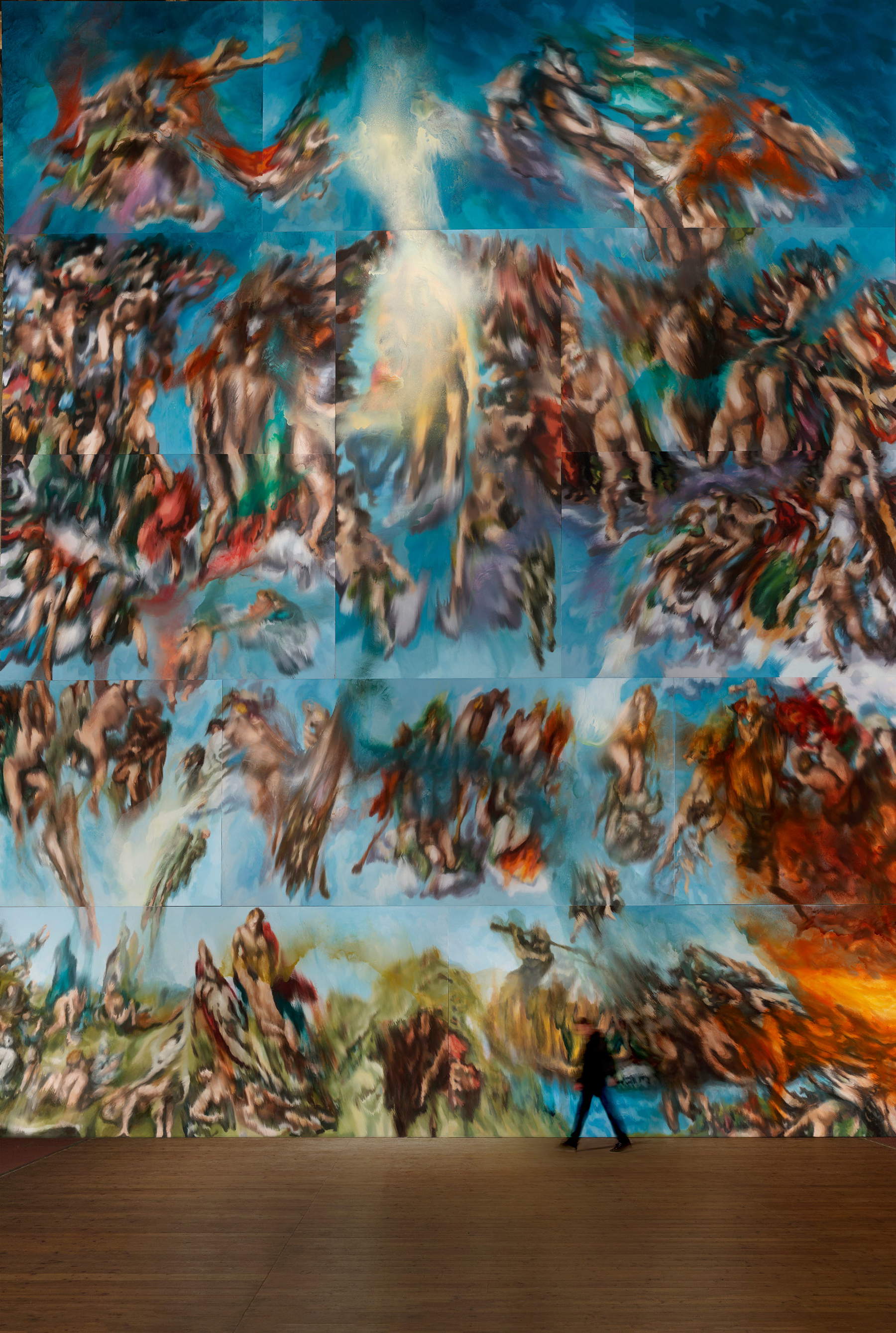
“If I had to sum up in one idea why I wanted to paint a variation of the Sistine Chapel in 2025, I would speak of my desire to bring painting to an overflowing plane, filled with movement,” Pombo says.
“In an age marked by disorientation and expectation, where humanity seems to wearily witness a reality in crisis, Pombo’s work stands out as necessary,” says Tommaso Sacchi, Milan City Councilor for Culture. “His large canvases evoke a caravan marching through the desert: blurred bodies, indistinct faces, suspended identities. A humanity on the move, fragile yet stubborn, that forcefully recalls the great urgencies of our present.”
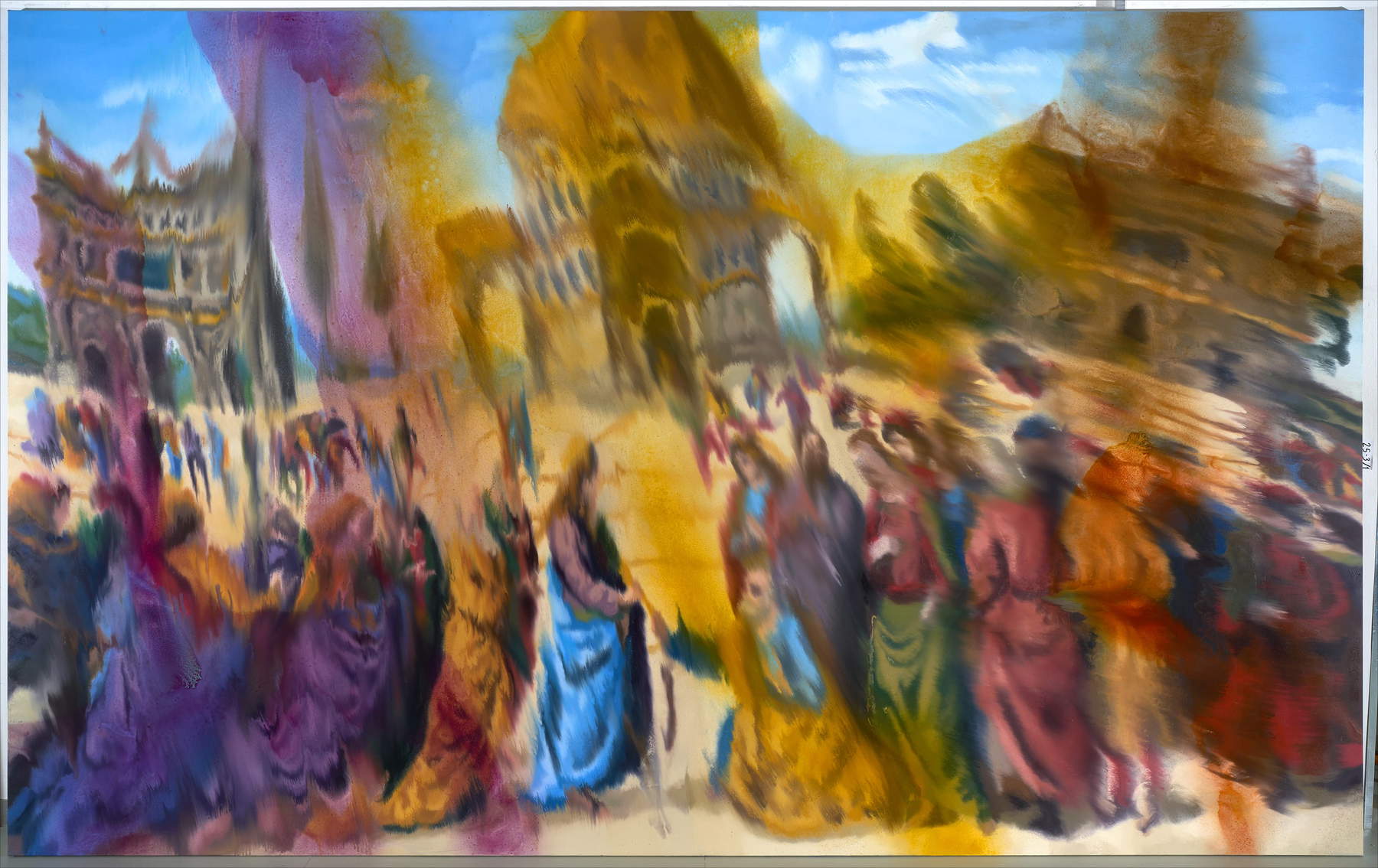
The year of the exhibition coincides with a significant anniversary: the 550th anniversary of the birth of Michelangelo Buonarroti (Caprese, 1475 - Rome, 1564). Pombo’s language, while radically different in mode and intention, measures itself against Michelangelo’s monumentality, without aspiring to emulate it, but seeking to interrogate its meanings through the lens of our time. About one-sixth of the complete work will be visible inside the Cathedral Space. In fact, the artist plans to create the entire Sistine Chapel on a 1:1 scale, a long-term project whose estimated duration is around five years. The public will be able to view a vast painting surface of 180 square meters, corresponding to the reinterpretation of the central Last Judgment, accompanied by six variations of the side walls, inspired by three episodes from the life of Moses and three from the life of Jesus Christ.
“The sin of humanity is choral, it is the collective guilt of man’s hybris (and here the masculine, which absorbs into itself by depriving the feminine of will, is used apropos) that disrespects creation, the harmony of the world, and its femininity,” emphasizes Maria Fratelli, Special Projects Unit Manager and Fabbrica del Vapore.
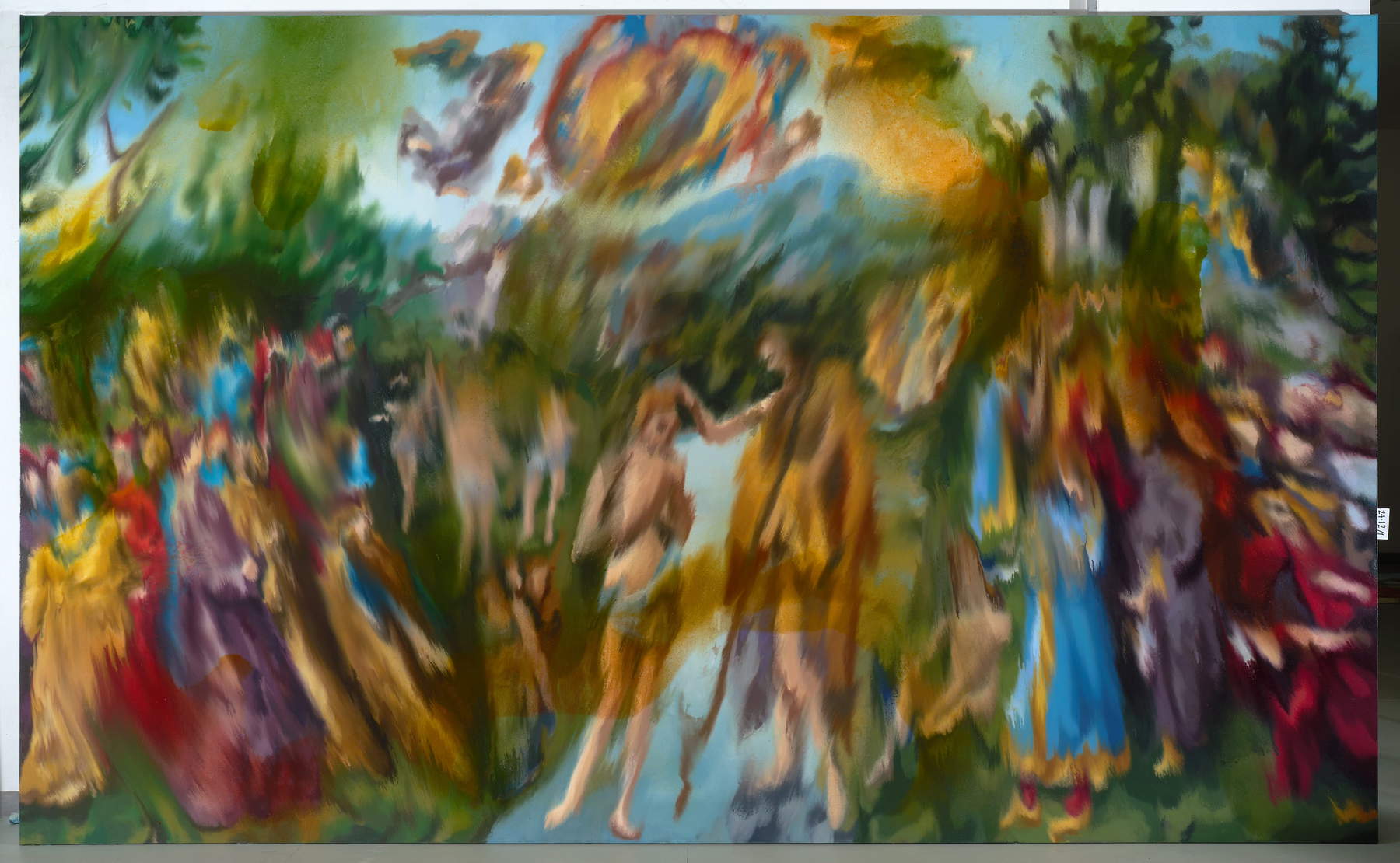
“Jorge R. Pombo, in his version of the Last Judgment, makes this ’sea of humanity’ the protagonist in the making of the work,” says Federica Tognon, Fabbrica del Vapore curator. “No longer a subject merely represented but a representative subject, calling to collaborate with him people with a complex, swinging life path, on the edge of society, who more than others have known the beauty and poverty of the human soul, that same soul that on the biblical Day of Judgment will be put on trial.”
A central element of the project lies in the participatory and social dimension. Accustomed to working in solitude, for the realization of Last Judgment Pombo chose to involve people in socially marginalized conditions. Thanks to the support of Caritas of the Municipality of Reggio Emilia, and later, after his move, of Caritas of Florence, the artist formed a team of heterogeneous collaborators, to whom he offered a concrete opportunity for work, regularly paid, and a space for expression and redemption. The experience is thus configured not only as an aesthetic operation, but as an intervention that aspires to redefine the very modes of artistic production. During the opening period of the exhibition, the public will be involved in an articulated experiential journey. It will be possible to observe the work from different viewpoints, including a view from above, and participate in moments of making parts of the work. The planned public program will also accompany the subsequent exhibition stages of the project, helping to consolidate the dialogue with the public and nurture reflection on the issues addressed: inclusion, spirituality and collective memory.
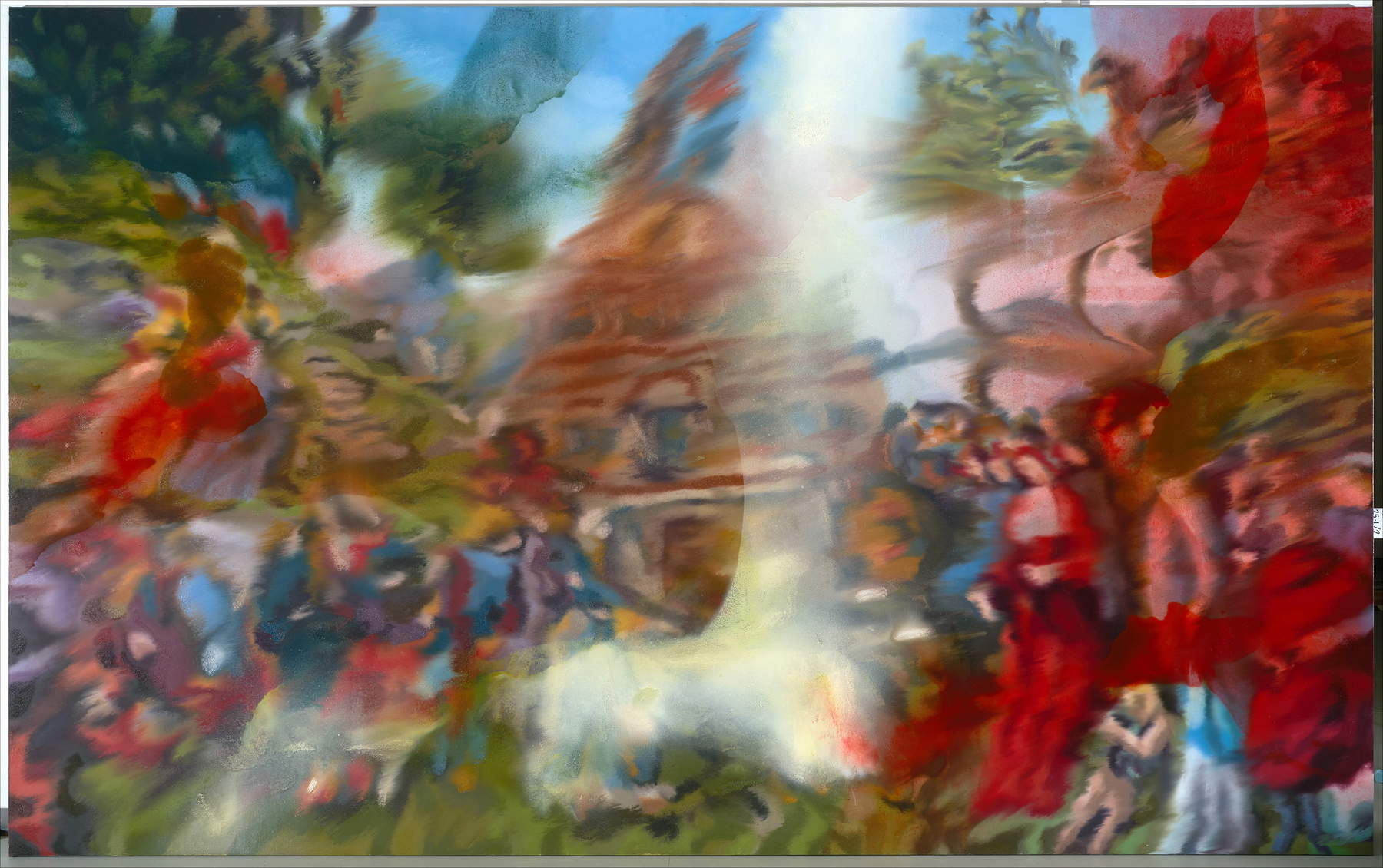
“You don’t paint emotion for the content of the image, the emotion is in the brushstroke,” says curator Vera Agosti. “His is metapainting, a painting that speaks of painting itself. The Spanish artist is interested in the tension that is created between classical and contemporary Renaissance language, between ancient painting and the filters of the past and the instances of contemporaneity.”
“Jorge R. Pombo not only attempts to restore a new meaning to painting,” adds curator Matteo Pacini, “but also offers food for thought on the value of work in contemporary society, and in this, Milan, with its history of factories, labor and hospitality, becomes an ideal stage for a reflection that embraces art, culture and the human condition.”
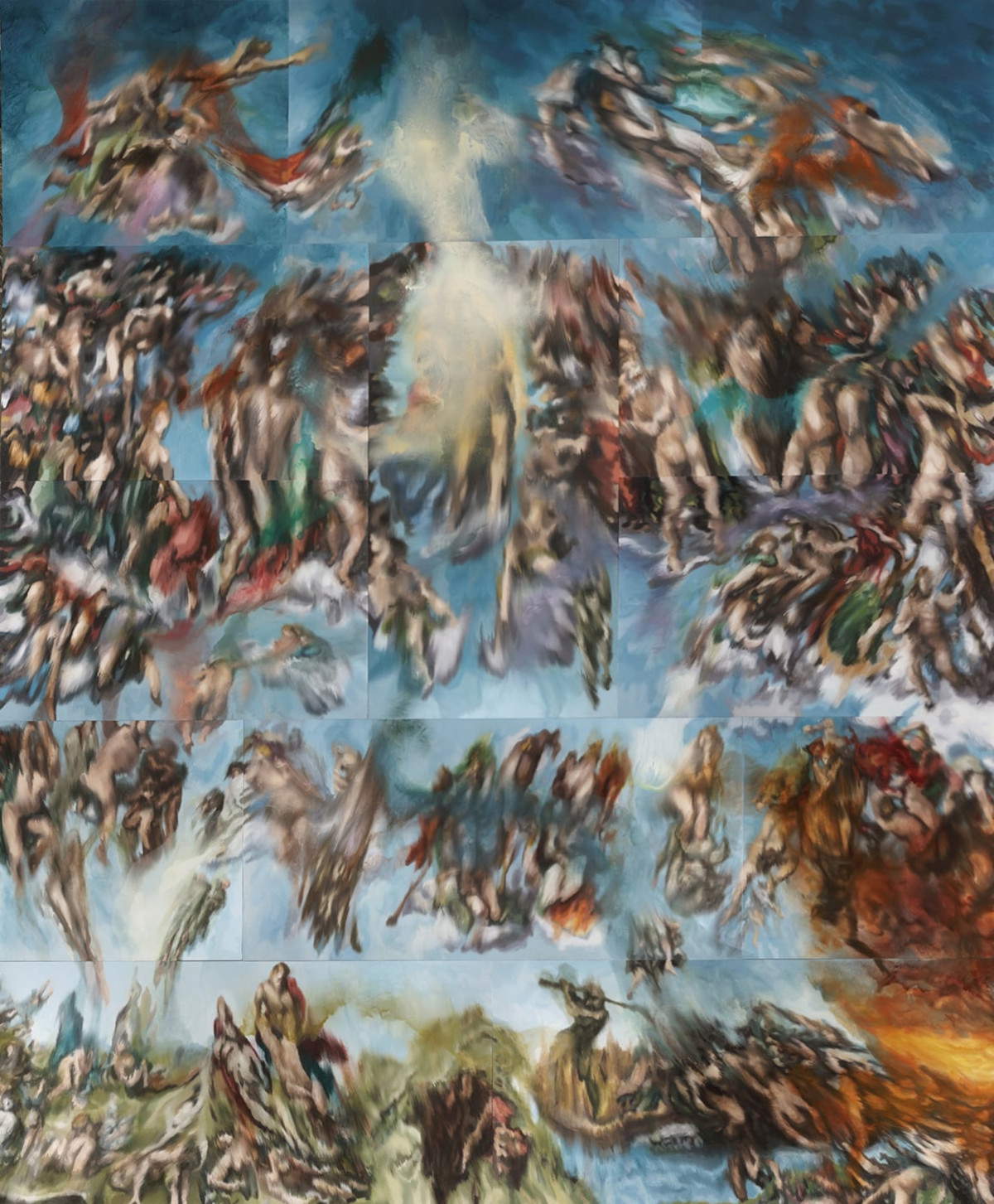
The project, promoted by ARTantide Gallery in collaboration with critic and writer Sandro Orlandi Stagl, is set to evolve further. The intention is to take the work to different cities, expanding the possibility of fruition and involving new contexts and new communities. It is not just about exporting an art project, but sharing a narrative that interweaves beauty and engagement, art and social cohesion. On the occasion of the opening, the exhibition’s official catalog, which includes institutional and critical contributions, will also be presented. Speakers include those of Milan City Councilor for Culture Tommaso Sacchi; Maria Fratelli, Director of the Special Projects Unit and Fabbrica del Vapore; and Federica Tognon, Curator of the Fabbrica del Vapore. Completing the volume are critical texts by curators Vera Agosti and Matteo Pacini, along with a contribution by curator and writer Sandro Orlandi Stagl.
Jorge R. Pombo, born in Barcelona in 1973, is a self-taught artist. In 1998, at the age of 24, he moved to Paris, driven by his attraction to the city’s art and cultural heritage. The following year he returned to Spain and began a cycle of experiences in territories characterized by strong cultural contrasts: he traveled to the Arctic, between Greenland and Siberia, attracted by the extreme and visual power of glacial landscapes. Later, his journey extends to places of similar symbolic intensity such as Tibet and India.
In 2010, he settled in New York, where he remained for nearly five years. His impact with the city’s chaotic energy fuels his research, which is enriched by his study of American Abstract Expressionism and the radical experiences of Black Mountain College. Both decisive influences in defining his stylistic signature. In 2015 he moved to Reggio Emilia, then settled in Florence, where he currently lives and works.
At the center of his work is the dialectic between opposite poles: figuration and abstraction, narrative and gesture, icon and erasure, word and painting. His language arises from the clash of these forces, in a close confrontation with the European pictorial tradition. One example is the frequent use of the white painter’s roller, employed to overwrite or negate the image, transforming the surface into a field of tension between classical quotation and iconoclastic will. He has exhibited regularly in Italy, Spain, France, Germany, the United States and China, taking part in numerous institutional projects, including those with the Wallraf-Richartz Museum in Cologne, the Museo del Duomo in Milan, the Scuola Grande di San Rocco in Venice, the Can Framis Museum in Barcelona and the 59th Venice Biennale.
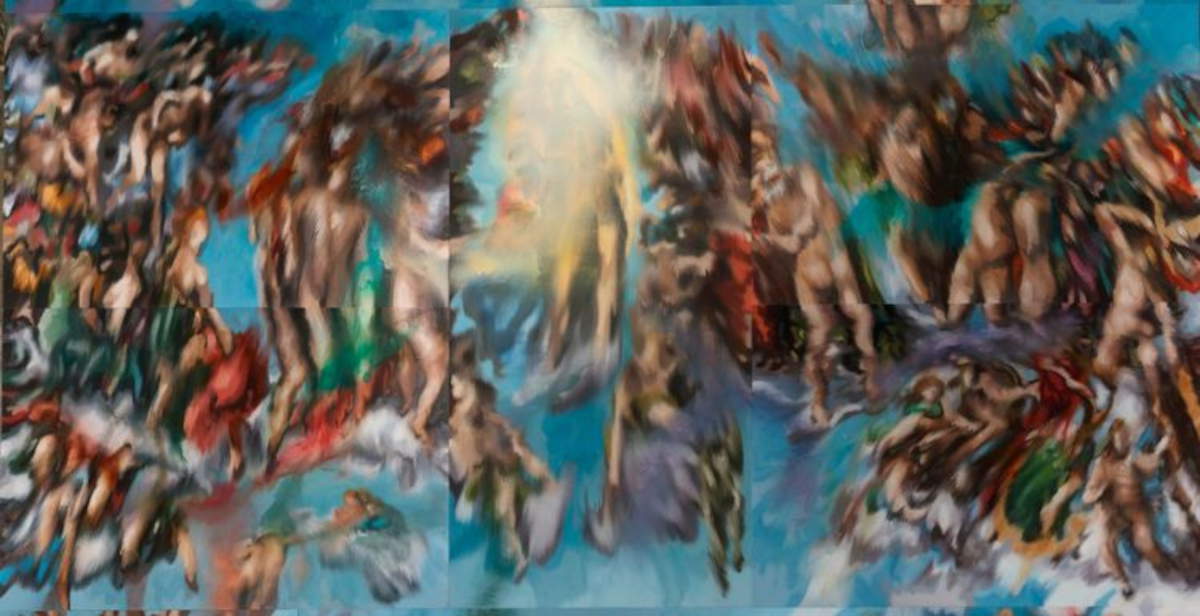 |
| In Milan, Jorge R. Pombo's monumental work reinterpreting the Last Judgment. |
Warning: the translation into English of the original Italian article was created using automatic tools. We undertake to review all articles, but we do not guarantee the total absence of inaccuracies in the translation due to the program. You can find the original by clicking on the ITA button. If you find any mistake,please contact us.